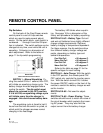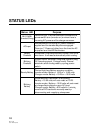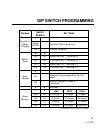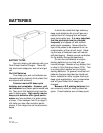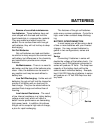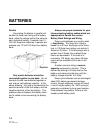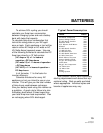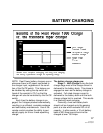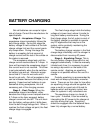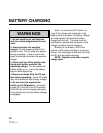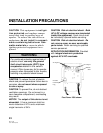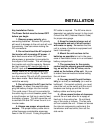
90-0115-00
10/97 Fltman.pm65
Battery Charging
Completely recharging wet cell deep-
cycle batteries requires the battery voltage
to be raised beyond what is known as the
gassing point. This is the voltage at which
the battery begins to bubble and gas is
given off. If charging stops short of this
point, sulfate is left on the plates and dete-
rioration of the battery begins. The gassing
point will vary with battery temperature.
Gel cell batteries must not be charged
to their gassing point. In fact, high voltage
charging which gasses these batteries is
harmful to them. They typically require a
lower bulk charge voltage and a higher float
voltage. Consult the battery manufacturer
for specifications.
Conventional Battery Chargers
Most conventional battery chargers are
single-stage constant voltage chargers.
They must stop short of the gassing point or
they will overcharge the battery bank.
Therefore, most 12 volt battery chargers
bring the battery voltage up to about 13.8
Volts.
BATTERY CHARGING
This presents two problems. First,
since the battery voltage does not reach the
gassing point, sulfate is left on the plates.
Second, 13.8 volts is close enough to the
gassing point that some gas will escape,
and the wet cell battery will need to be
frequently topped off with distilled water.
Conventional battery chargers also
suffer from another inherent characteristic of
design, which is a tapering output. While
they will deliver their rated current into a
deeply discharged battery, as the battery
becomes charged and the voltage rises, the
output current of the charger tapers down.
This taper continues as the battery is
charged, taking a very long time to reach an
acceptable recharge.
Fleet Power Battery Chargers
Fleet Power battery chargers are de-
signed to overcome the limitations of con-
ventional chargers by utilizing 3 distinct
stages, each designed for optimal recharg-
ing of both wet cell and gel cell deep-cycle
batteries.
16



